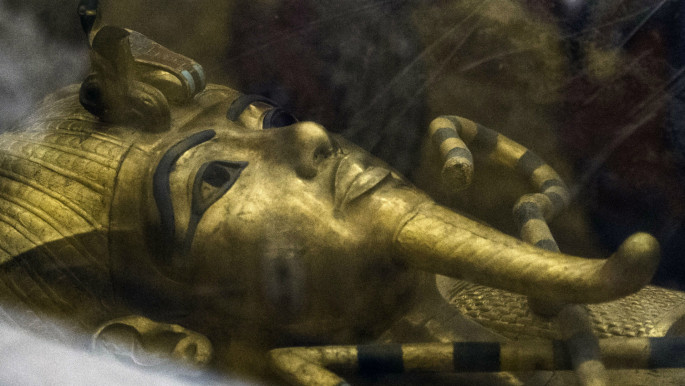Hunting Nefertiti: More scans for King Tut's 'secret chambers'
Egypt's antiquities minister has said more tests are needed to find out whether there is a secret chamber in the tomb of Tutankhamun that some believe may hide Queen Nefertiti's remains.
Khaled al-Anani made the announcement at a press conference in Luxor, dashing hopes that another radar scan conducted on Thursday would provide certainty on whether the ancient tomb had hidden chambers.
His predecessor, Mamdouh al-Damati, had earlier said that there was a "90 percent chance" of two hidden chambers containing organic material, behind a wall in the ancient Egyptian boy-king's tomb.
He said experts would conduct a fourth scan of the tomb by the end of April, then invite scholars for a conference to study the results in the first week of May.
"Nothing will be announced until there is a precise study," he said.
Renowned British archaeologist Nicholas Reeves, who attended the press conference, has said that Nefertiti's tomb could be in a secret chamber adjoining Tutankhamun's in the Valley of Kings necropolis at Luxor in southern Egypt.
 |
|
| King Tut died at the age of 19 [Getty] |
Reeves, professor of archaeology at the University of Arizona, believes one door of Tutankhamun's tomb could conceal the burial place of Nefertiti, the wife of Tutankhamun's father.
According to him, Tutankhamun, who died unexpectedly, was entombed hurriedly in an underground chamber probably not intended for him.
"I believe and I still believe" that the King Tut tomb is "simply the outer elements of a larger tomb that is of Nefertiti," he said, repeating his assertion about the ancient queen - whose 3,300-year-old bust on display in Berlin is one of the most famous symbols of ancient Egypt and classical beauty.
Damati said this month that preliminary scans had unearthed evidence of "two hidden rooms behind the burial chamber" of the boy king.
Anani said on Thursday that analysis would determine the thickness of a possible wall behind the funerary chamber.
"There is a possibility that there is a cavity, after the latest scan. I hope we will find something, but as a scientist I need to be careful before announcing results," Anani said.
He added that if the latest scan revealed further evidence of a hidden room, a small hole could be bored through a wall and a camera inserted to discover what lay behind.
Nefertiti played a major political and religious role in the 14th century BC.
She actively supported her husband Akhenaten - Tutankhamun's father - who temporarily converted ancient Egypt to an early form of monotheism by imposing the cult of sun god Aton.
Tutankhamun died aged 19 in 1324BC, after just nine years on the throne. His final resting place was discovered by another British Egyptologist, Howard Carter, in 1922.
The discovery of the hidden chambers has ignited massive interest among the archaeological community and beyond. It could also renew excitement in Egypt's antiquities and help reinvigorate the country's flagging tourism industry.
Tourism has been hit hard in Egypt in recent years by political violence, an insurgency in the northern Sinai Peninsula, and persistent attacks since the military's 2013 overthrow of an elected but divisive Islamist president.





 Follow the Middle East's top stories in English at The New Arab on Google News
Follow the Middle East's top stories in English at The New Arab on Google News


